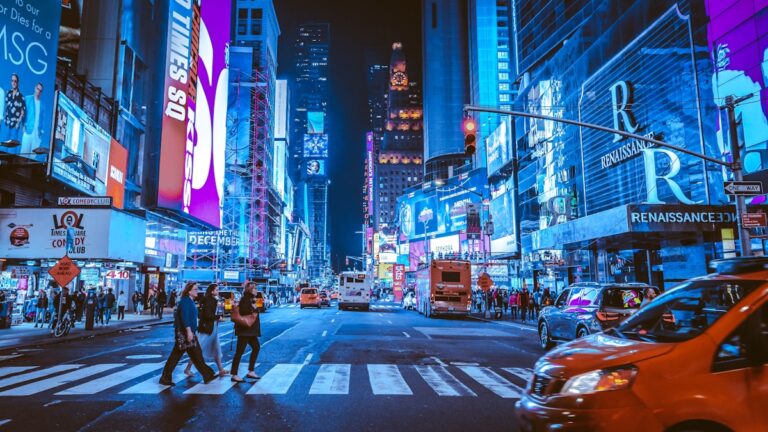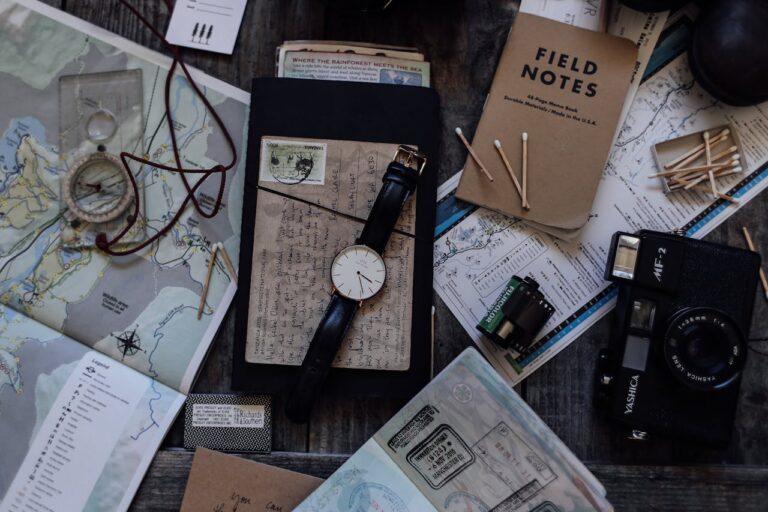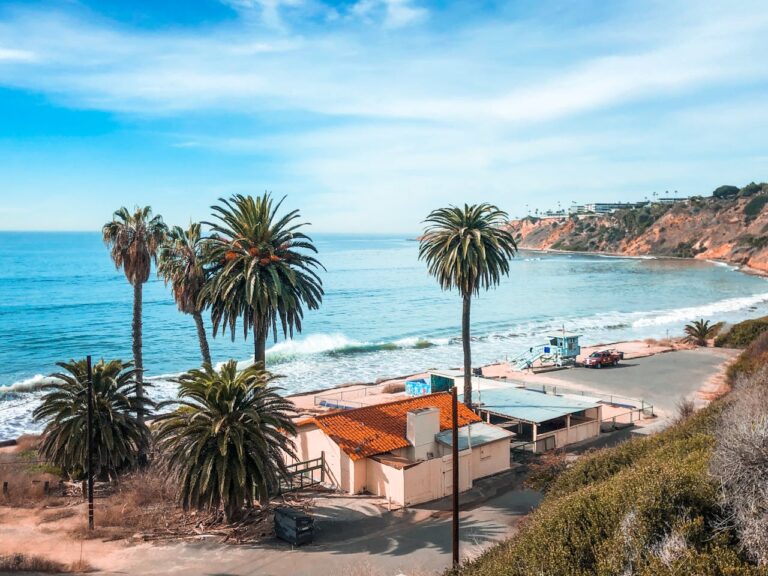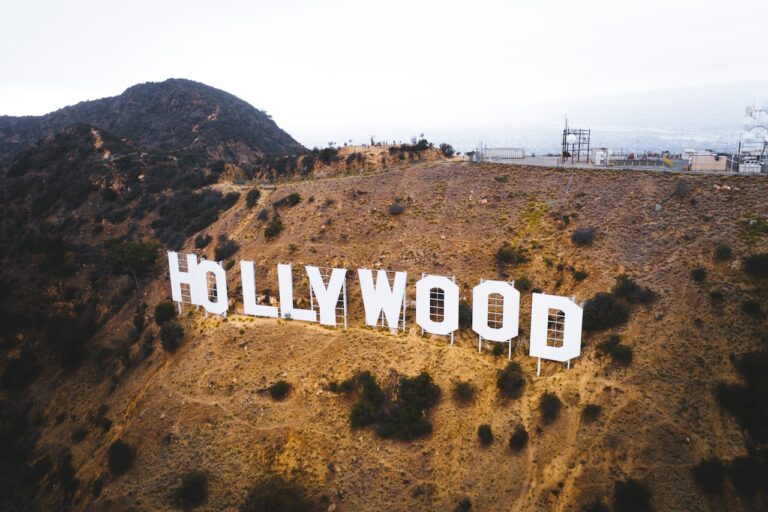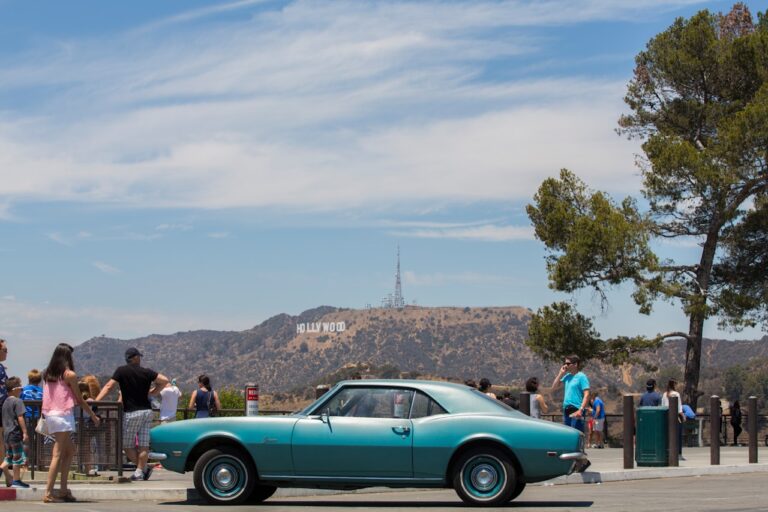Best Time To Visit New York City
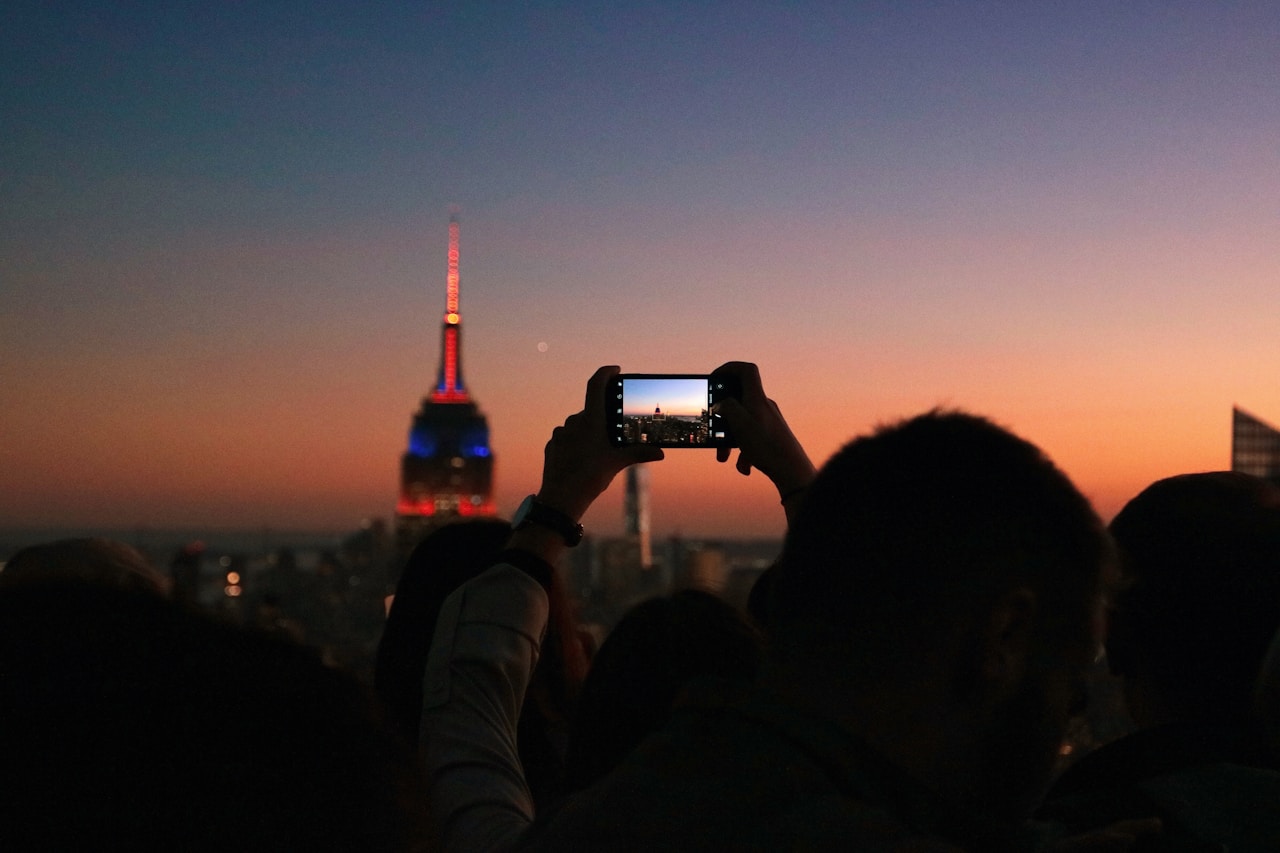
The best time to visit New York City is during the fall (September-October) or spring (April-May).
- Understanding the Best Time To Visit New York City
- Spring in New York City: A Blooming Start
- Summer in New York City: Buzzing Streets and Festivals
- Fall in New York City: Crisp Air and Colorful Parks
- Winter in New York City: Lights, Ice Rinks, and Cozy Streets
- Choosing the Right Month for Your Interests
- Wrapping Up
These shoulder seasons offer pleasant temperatures, fewer crowds, and lower hotel rates compared to summer or the December holiday rush.
Fall showcases spectacular foliage in Central Park, while spring brings cherry blossoms and outdoor festivals.
Each season in NYC presents unique attractions, from summer street fairs to winter’s magical holiday displays.
Principal Conclusions
ShowUnderstanding the Best Time To Visit New York City
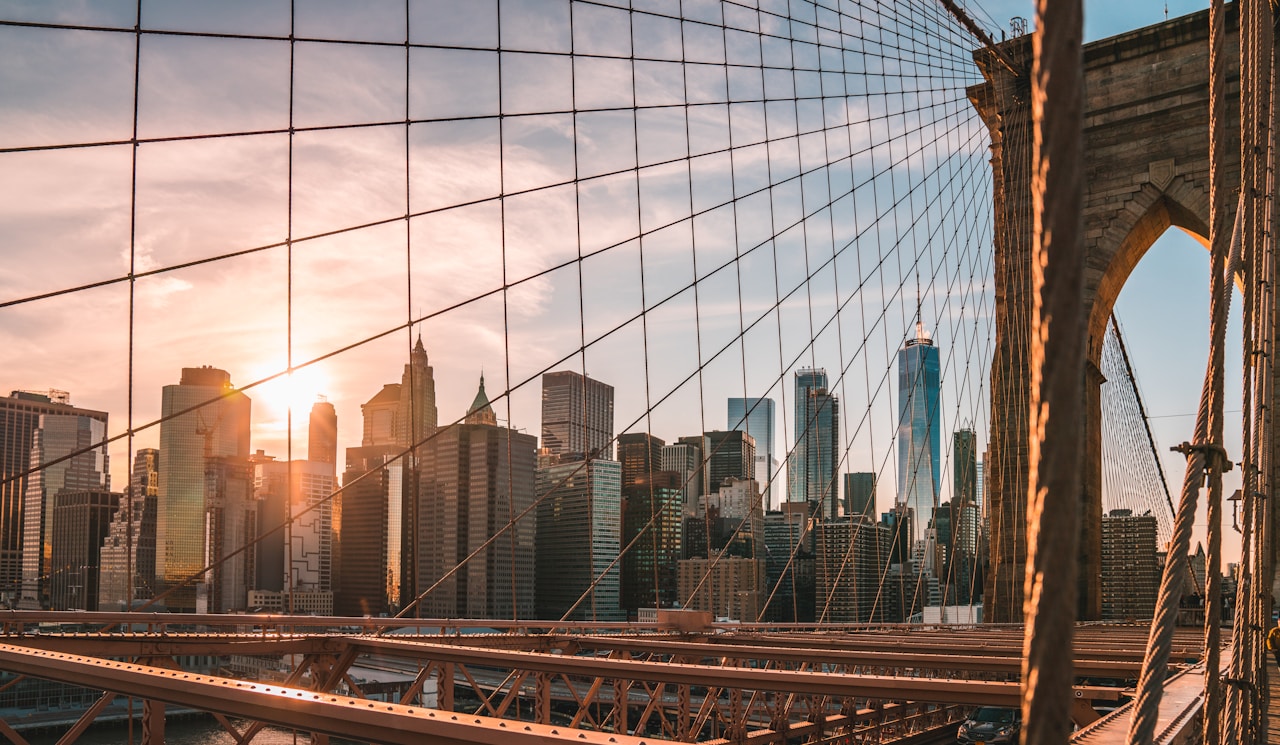
New York City transforms dramatically through its four distinct seasons, each offering visitors unique experiences from snowy winters to lively springs, hot summers, and colorful autumns.
When planning a visit to the Big Apple, travelers should consider factors beyond weather, including crowd levels, hotel rates, and seasonal events that can greatly impact their experience.
Understanding these seasonal variations and planning considerations helps visitors select the ideal time to experience New York’s iconic attractions, cultural offerings, and urban energy.
What to Expect From New York City’s Four Seasons
New York City transforms dramatically across its four seasons, each offering distinct advantages and challenges for visitors.
Understanding the seasonal patterns helps travelers choose the perfect time to experience the city’s attractions while maneuvering through crowds and weather conditions.
Every month presents its own unique collection of events, crowd levels, and atmospheric conditions that cater to different traveler preferences and priorities.
Pros and Cons of Visiting During Each Season
Transforming dramatically with each passing season, New York City offers visitors distinctly different experiences throughout the year.
The best time to visit New York City depends on preferences: April brings mild temperatures, July delivers lively but humid streets, September offers ideal weather, and October showcases spectacular foliage.
Each season presents unique advantages and challenges for travelers seeking authentic NYC experiences.
Events and Crowds: A Month-by-Month Snapshot
When should one brave the crowds of the Big Apple?
January offers post-holiday calm.
February brings Fashion Week.
March’s St. Patrick’s Day parade draws revelers.
April sees tulips bloom.
New York City in May dazzles with perfect temperatures.
June ushers in summer festivals.
July peaks with tourists.
New York City in August swelters.
Weather in New York City in September cools ideally for exploration.
Key Factors to Consider When Planning Your Visit
New York City’s weather patterns and seasonal events considerably impact the ideal timing for your visit.
Tourists should examine monthly temperature averages, precipitation forecasts, and seasonal phenomena like fall foliage or summer heat waves when planning their trips.
Major festivals, holidays, and celebrations—from the Thanksgiving Day Parade to New Year’s Eve in Times Square—transform the city’s atmosphere, accessibility, and accommodation prices throughout the year.
Weather Trends and Seasonal Highlights
The seasons play an essential role in determining the ideal time to visit New York City, as each brings its own distinct atmosphere and advantages.
August temperatures peak, often bringing humid conditions, while September offers milder weather in New York City.
Many travelers prefer New York City weather in September for its comfortable temperatures and reduced crowds after the August tourism surge ends.
How Festivals and Holidays Affect Travel Plans
Festivals and holidays dramatically transform New York City’s visitor experience, making timing considerations essential for travel planning.
December brings magnificent holiday displays while summer offers abundant outdoor activities.
October delivers perfect weather for exploring autumn-themed events. September maintains warm temperatures ideal for sightseeing.
Winter, particularly for travelers from Germany, showcases the city’s magical snow-covered landscapes and indoor cultural attractions.
Spring in New York City: A Blooming Start

Spring transforms New York City from winter dormancy into a colorful playground from March through May.
Early spring offers fresh air and manageable crowds, while April brings tulip displays in Central Park and pleasantly mild temperatures.
New York City in March: Fresh Air and Fewer Crowds
March in New York City offers a revitalizing blend of crisp temperatures averaging 45-55°F and noticeably thinner crowds than peak tourist seasons.
Central Park and the High Line showcase early spring blooms while providing ideal settings for leisurely strolls away from the city’s bustling pace.
The month features distinctive events like the St. Patrick’s Day Parade and early cherry blossoms in Brooklyn Botanic Garden, giving visitors authentic local experiences with more comfortable access to major attractions.
Average Weather and Local Activities in March
The shift from winter to spring begins in March, when New York City gradually sheds its frosty coat and welcomes milder temperatures averaging between 35°F to 50°F (2°C to 10°C).
Visitors can enjoy emerging outdoor events like the St. Patrick’s Day Parade while exploring less crowded attractions.
Central Park begins showing hints of green, offering a revitalizing escape from Manhattan’s urban density.
Ideal Spots for Early Spring Walks and Events
As winter gradually retreats, Bryant Park transforms into one of the city’s most inviting destinations for early spring excursions.
The High Line offers elevated views of awakening greenery, while Central Park’s Conservatory Garden showcases early blooms.
Washington Square Park buzzes with street performers and chess players.
The Brooklyn Botanic Garden hosts the Sakura Matsuri festival, celebrating cherry blossoms in spectacular fashion.
New York City in April: Parks, Tulips, and Mild Days
April brings average temperatures between 45-61°F (7-16°C) to New York City, with increasing sunshine hours and less frequent rainfall than March.
Central Park’s explosion of tulips, cherry blossoms, and daffodils creates perfect backdrops for both iconic and impromptu photo opportunities throughout the month.
Major landmarks like the Empire State Building and Statue of Liberty experience shorter wait times compared to peak summer months, allowing visitors to enjoy more attractions with less time spent in queues.
Weather in New York City in April
Spring awakens New York City in April, bringing mild temperatures that typically range between 45°F to 60°F (7°C to 16°C).
Occasional rain showers alternate with stretches of sunny days, creating perfect conditions for exploration without winter’s constraints.
| Weather Aspect | Early April | Late April |
|---|---|---|
| Precipitation | 4.5 inches | 3.2 inches |
| Sunshine Hours | 6-7 hrs/day | 7-8 hrs/day |
| Wind Conditions | Breezy | Milder |
What Makes April Special for Sightseeing
Three distinct features make April an ideal month for sightseeing in New York City: blooming nature, comfortable temperatures, and thinner crowds.
Central Park transforms with cherry blossoms and tulips creating perfect photo opportunities.
The mild 50-60°F weather allows for extended outdoor exploration without summer’s humidity or winter’s chill.
Tourists can experience landmarks with shorter lines before peak season begins.
New York City in May: Warmer Days and Outdoor Fun
May offers visitors to New York City a perfect blend of early summer warmth without the peak tourist crowds or prices of high season.
The city’s calendar fills with notable outdoor events during this month, including the popular Shakespeare in the Park series and the Brooklyn Film Festival.
Outdoor dining scenes across the five boroughs come alive, making May an ideal time to experience the city’s culinary landscape while enjoying comfortable temperatures averaging between 60-70°F.
Must-Visit Events and Attractions in May
As the city fully awakens from winter’s embrace, New York transforms into a lively playground of outdoor festivals, cultural celebrations, and seasonal events.
May highlights include the spirited Ninth Avenue Food Festival, Shakespeare in the Park, and the Brooklyn Film Festival.
Don’t miss the colorful Brooklyn Botanic Garden’s Cherry Blossom Festival or the electric atmosphere of Fleet Week.
Early Summer Vibes Without Peak Season Prices
Beyond the fantastic events that fill the city’s calendar, May in New York City offers another compelling advantage for travelers: the perfect balance of early summer weather without high-season crowds and prices.
Temperatures hover comfortably between 60-75°F, ideal for extended explorations.
Hotel rates remain 15-20% lower than summer peaks, while tourist attractions maintain shorter lines and enhanced accessibility before the June rush begins.
Summer in New York City: Buzzing Streets and Festivals
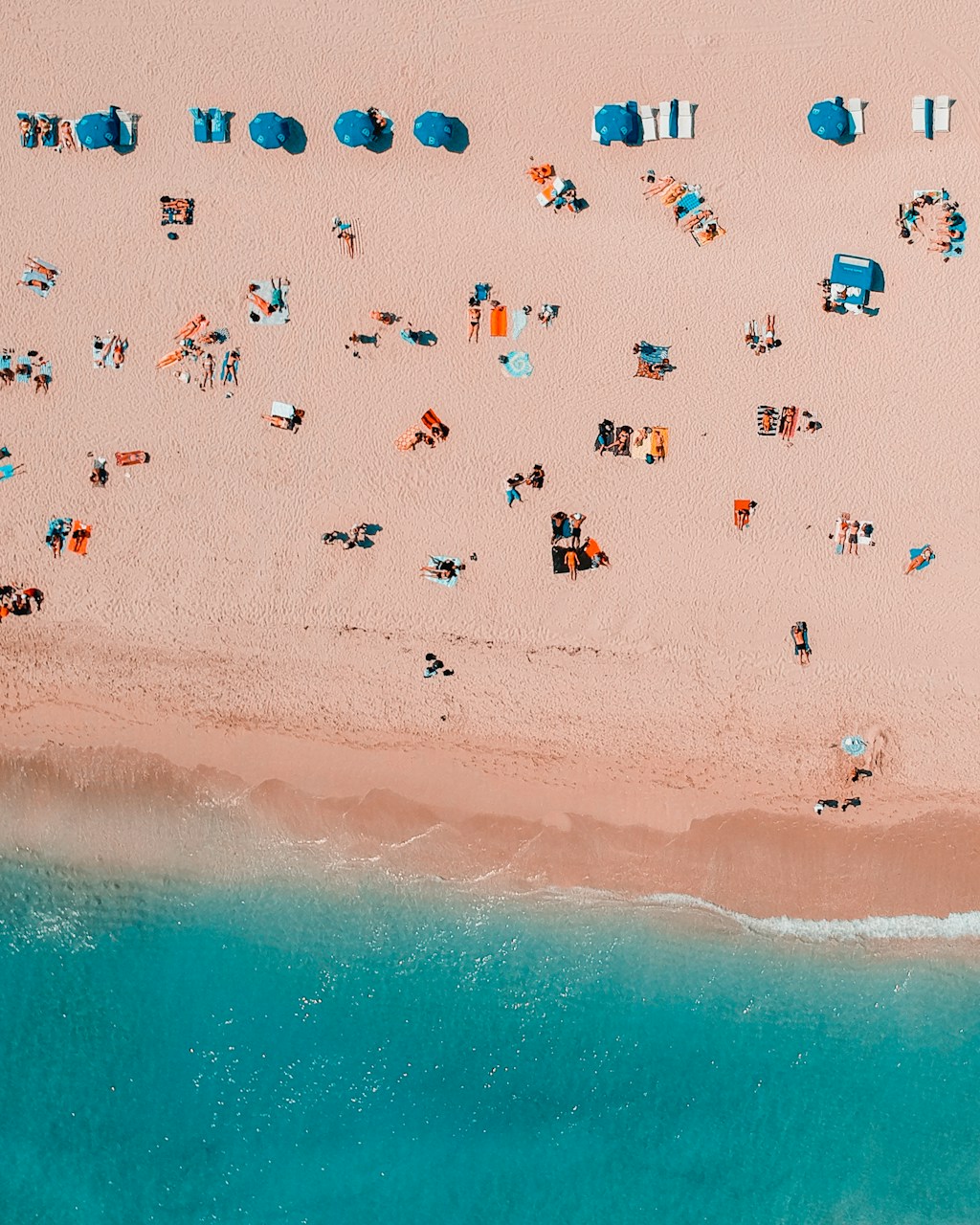
Summer transforms New York City into a lively playground of cultural events, outdoor activities, and sweltering temperatures.
From Independence Day festivities in July to the electric atmosphere of August street fairs, the city pulses with a distinct seasonal energy.
Visitors can enjoy rooftop bars, outdoor concerts at Central Park, and iconic events like Shakespeare in the Park during these warmer months.
New York City in July: Heat, Parades, and Nightlife
July in New York City brings sweltering temperatures often exceeding 85°F, making rooftop bars, water taxi tours, and museum visits essential cooling strategies during midday heat.
The city transforms with iconic summer events including the spectacular Macy’s Fourth of July Fireworks and outdoor movie screenings in parks across all five boroughs.
Despite the crowds, summer evenings offer extended hours at major attractions and lively nightlife options, with many locals heading to the Hamptons on weekends, slightly reducing the urban density.
What the Weather Looks Like and How to Stay Cool
The scorching heat of July in New York City can be overwhelming, with temperatures regularly climbing into the 90s Fahrenheit (30s Celsius) and humidity levels that make the air feel thick and oppressive.
Savvy visitors escape the heat in the city’s many air-conditioned museums, splash in public pools, or retreat to shaded areas in Central Park with cold drinks.
Things to Do in the City During the Summer Rush
Despite the heat and humidity, New York City pulses with energy during July as streets overflow with both locals and tourists enjoying the season’s unique offerings.
The city transforms with free outdoor concerts in Central Park, rooftop bars with skyline views, and Independence Day celebrations.
Locals escape to Coney Island’s beaches, while adventurous visitors explore lesser-known neighborhoods without winter’s constraints.
New York City in August: Late Summer Energy
August in New York City brings temperatures averaging 76-84°F (24-29°C) with occasional high humidity and thunderstorms.
Visitors can enjoy Shakespeare in the Park, the Hong Kong Dragon Boat Festival in Queens, and the Jazz Age Lawn Party on Governors Island.
The city’s energy remains high as summer reaches its peak, with many locals taking vacations and outdoor venues operating at full capacity.
New York City Weather in August and What to Expect
Summer reaches its crescendo in New York City during August, when temperatures hover between 75-85°F (24-29°C) with occasional spikes into the 90s.
Humidity often intensifies the heat, making air-conditioned venues particularly appealing.
Afternoon thunderstorms provide brief respites from the warmth.
Pack light clothing, comfortable walking shoes, and portable water bottles for exploring the city’s lively outdoor scene.
Popular Seasonal Attractions in Full Swing
Throughout the city’s five boroughs, seasonal attractions reach their lively peak during August, transforming New York into an open-air playground of culture and entertainment.
Visitors can experience Manhattan’s unrestrained spirit through:
- Free outdoor concerts at Central Park SummerStage
- Shakespeare in the Park performances under open skies
- Rooftop bar culture offering skyline panoramas without boundaries
Best New York City Things to Do in Summer
Summer in New York City offers a treasure trove of iconic experiences, from sipping cocktails at rooftop bars with panoramic skyline views to exploring lively street fairs that pop up throughout the five boroughs.
Outdoor film screenings transform parks into open-air theaters, with Bryant Park and Brooklyn Bridge Park hosting popular series against stunning backdrops.
The warmer months also present perfect opportunities for day trips to nearby beaches, hiking trails in the Hudson Valley, or weekend getaways to the Hamptons when the urban heat becomes overwhelming.
Rooftop Views, Street Fairs, and Outdoor Movies
When warm sunshine embraces the city, New York transforms its urban landscape into an outdoor playground of elevated experiences and street-level celebrations.
- Rooftop bars offer liberating panoramic views of the skyline, from Brooklyn Bridge to Central Park, with craft cocktails under the stars.
- Street fairs transform neighborhoods into lively markets, where local culture thrives unrestricted.
- Open-air cinema brings film enthusiasts together in parks citywide.
Weekend Escapes and Day Trips Worth Planning
While the city pulses with energy, savvy travelers and locals alike recognize the value of occasional escapes from Manhattan’s magnificent chaos.
Summer presents ideal opportunities for liberating day trips to the windswept beaches of Fire Island, verdant hiking trails in the Hudson Valley, or the artistic haven of Dia:Beacon—all reachable within two hours, offering invigorating counterpoints to urban exploration.
Fall in New York City: Crisp Air and Colorful Parks
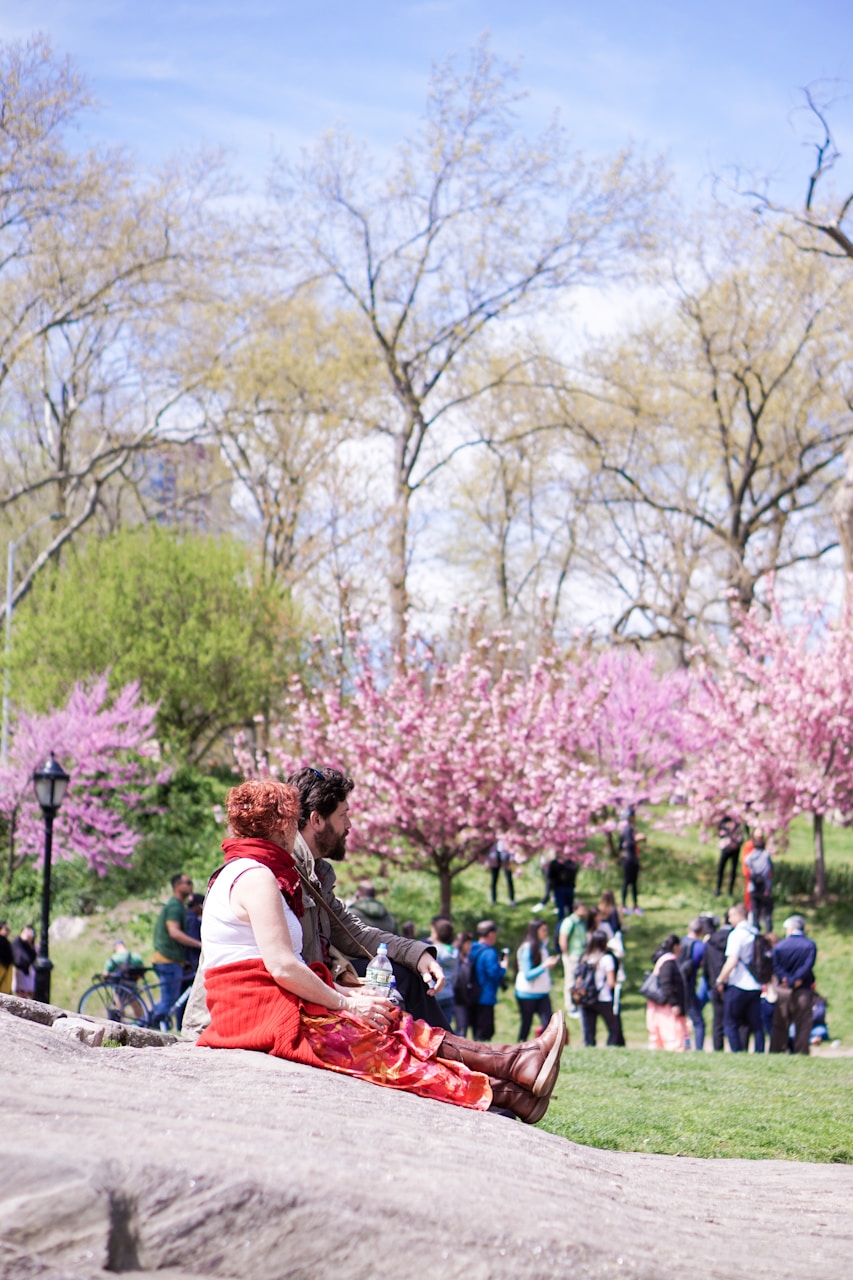
Fall in New York City transforms the urban landscape with comfortable temperatures and stunning foliage displays.
September offers pleasant 70°F days perfect for outdoor exploration, while cultural events like the New York Film Festival attract visitors from around the world.
New York City in September: Pleasant Weather and Events
September in New York City marks the shift to fall with temperatures ranging from 65°F to 78°F and notably less humidity than summer months.
This comfortable weather creates ideal conditions for exploring the city’s parks, where foliage begins its spectacular color transformation, and for enjoying the numerous cultural events that return to the city after the summer lull.
The pleasant climate combined with smaller tourist crowds makes September one of the most rewarding months for experiencing both outdoor activities and indoor cultural offerings throughout the five boroughs.
Weather in New York City in September
As summer heat begins to fade, New York City transforms into a golden paradise in September.
Temperatures hover comfortably between 65-75°F (18-24°C), creating perfect conditions for exploring the city’s attractions.
- Humidity levels drop substantially, making outdoor activities more enjoyable.
- Morning fog often gives way to crisp, clear afternoons.
- Light jacket weather arrives with occasional warm spells.
Why This Month is Ideal for Walks and Cultural Shows
The crisp air and moderate temperatures of early autumn create ideal conditions for both outdoor adventures and indoor cultural experiences across New York City.
| Venue Type | September Activity | Freedom Factor |
|---|---|---|
| Parks | Foliage walks | High |
| Broadway | New season opens | Medium |
| Museums | Less crowded | High |
| Festivals | Outdoor events | High |
| Rooftops | Pleasant evenings | Very High |
New York City in October: Fall Foliage and Festivals
October transforms New York City with spectacular fall foliage in Central Park, Hudson River Park, and the High Line.
Visitors can experience signature autumn events like the Village Halloween Parade, New York Film Festival, and Open House New York weekend.
The moderate temperatures, generally in the 50s-60s°F, create ideal conditions for walking tours and outdoor explorations with fewer tourist crowds than summer months.
Things to Do in New York City in October
When autumn leaves transform Central Park into a tapestry of crimson and gold, New York City embraces October with a distinctive seasonal charm that captivates visitors and locals alike.
- Wander across the Brooklyn Bridge for unobstructed skyline views framed by fall foliage.
- Experience the Village Halloween Parade’s uninhibited creative expression.
- Explore outdoor markets at Union Square without summer crowds or winter chill.
Seasonal Highlights and Travel Tips for October
Why do countless travelers mark October as the quintessential month for experiencing New York City?
The answer lies in perfect conditions: comfortable temperatures between 55-65°F, spectacular foliage in Central Park, smaller crowds at major attractions, and signature events like the Village Halloween Parade and New York Film Festival.
Pack layers, comfortable walking shoes, and book accommodations well ahead to secure the best rates.
Winter in New York City: Lights, Ice Rinks, and Cozy Streets

Winter in New York City divides into distinct experiences, with December transforming the metropolis into a holiday wonderland of elaborate window displays and the iconic Rockefeller Center tree.
February offers a quieter city experience as crowds thin out, hotel rates drop considerably, and snow occasionally blankets landmarks in postcard-perfect scenes.
While temperatures remain cold throughout winter, each month presents unique attractions—from December’s festive markets to February’s Valentine’s celebrations and indoor cultural events that locals cherish.
New York City in December: Holidays and Magic
December transforms New York City into a winter wonderland with bustling seasonal markets at Bryant Park and Union Square offering handcrafted gifts and festive treats.
Spectacular light displays illuminate landmarks like Rockefeller Center with its towering Christmas tree and Saks Fifth Avenue’s dazzling storefront shows, while ice skating rinks at Central Park and Rockefeller Center create quintessential holiday experiences.
When temperatures drop, visitors can retreat to the city’s wealth of indoor attractions, including world-class museums, Broadway shows, and cozy restaurants serving seasonal specialties.
Seasonal Markets, Light Displays, and Ice Skating
New York City’s transformation into a winter wonderland reaches its pinnacle with the emergence of seasonal markets, dazzling light displays, and outdoor ice skating rinks.
- Bryant Park’s Winter Village offers artisanal shopping and free skating.
- Dyker Heights’ residential light spectacle creates an unregulated visual feast.
- Columbus Circle’s Holiday Market provides independent vendor treasures without corporate uniformity.
Indoor Attractions to Escape the Cold
While the outdoor holiday spectacles captivate visitors with their seasonal charm, Manhattan’s wealth of indoor attractions provides welcome sanctuary from winter’s biting temperatures.
The Met, MoMA, and Natural History Museum offer cultural refuge, while Chelsea Market and Grand Central Terminal blend shopping with architectural splendor.
For entertainment, Broadway shows and intimate jazz clubs deliver memorable experiences sheltered from the elements.
New York City in February: Quiet Beauty and Lower Prices
February offers New York’s most affordable hotel rates and shortest tourist lines, creating an intimate atmosphere perfect for museum exploration and indoor activities.
Visitors can enjoy special Valentine’s Day packages at restaurants and hotels throughout the city, often with significant discounts compared to peak seasons.
The city’s extensive network of museums, theaters, and heated indoor attractions provides ample refuge from the winter chill while offering cultural experiences without the crowds.
Valentine’s Day Ideas and Museum Hopping
Valentine’s Day in New York City offers unique opportunities for couples seeking romance amid the winter chill.
February’s reduced crowds make museum exploration especially rewarding.
- Reserve rooftop dining with skyline views at iconic venues like 230 Fifth.
- Explore the Met’s lesser-known exhibits without summer tourist crowds.
- Catch limited-run performances at intimate theaters throughout Manhattan.
Read more: Best Things To Do In New York City With Kids
Warm Spots and Deals During the Coldest Weeks
Winter’s coldest weeks—late January through mid-February—reveal a secret side of New York City that budget-conscious travelers prize. Hotels slash rates by 40-60%, while indoor attractions offer warming respite.
| Warm Havens | Features | Price Drops |
|---|---|---|
| Spa Castle | Thermal pools | 25% weekday |
| Museum cafés | Art + warmth | Free Fridays |
| Winter garden atriums | Tropical plants | Always free |
Choosing the Right Month for Your Interests
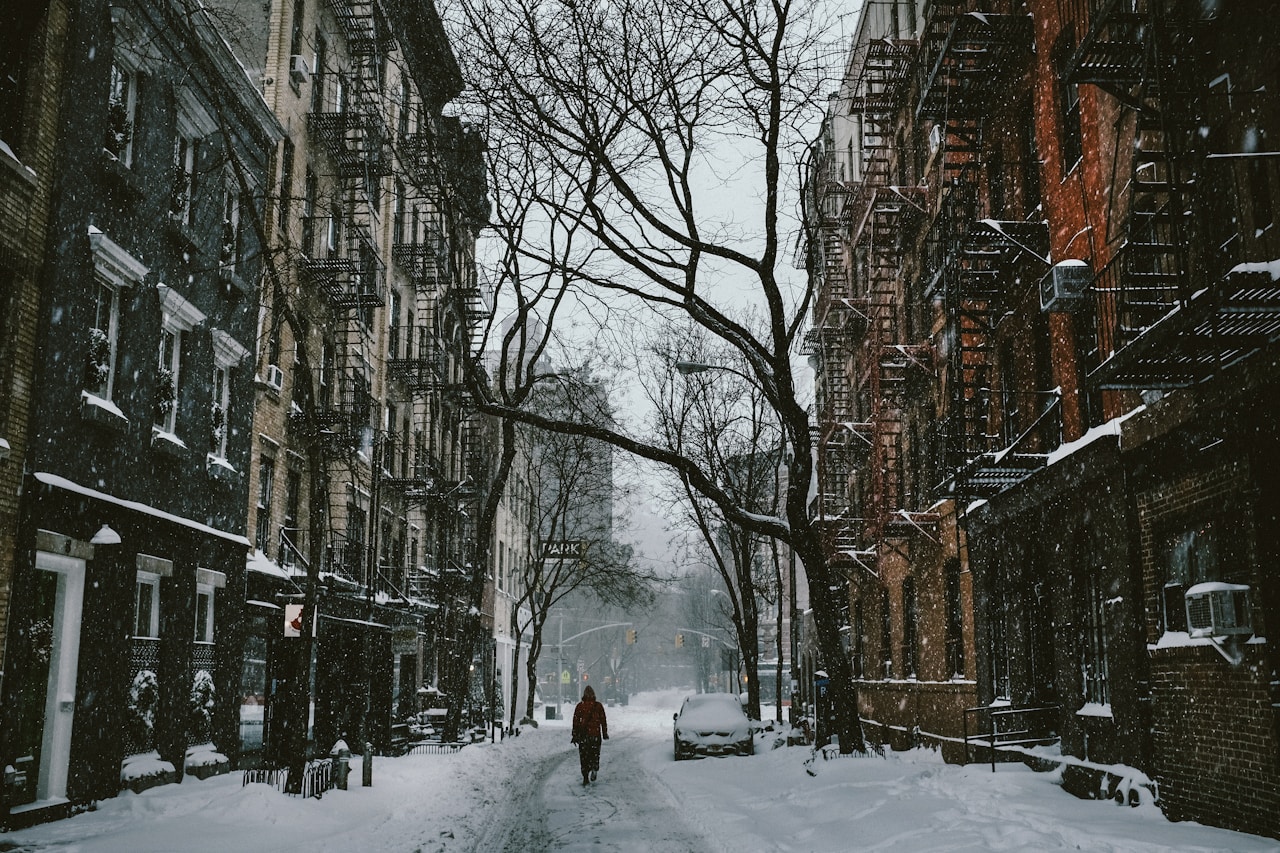
Selecting the ideal month to visit New York City depends largely on your personal weather preferences and planned activities.
Summer offers warm temperatures perfect for park explorations and outdoor events, while fall provides comfortable weather and stunning foliage across Central Park.
Winter attracts those seeking holiday magic and smaller crowds at attractions, whereas spring delivers mild temperatures and beautiful blooming gardens throughout the city.
Best Time to Visit Based on Weather Preferences
New York City experiences distinct seasonal changes that influence visitor experiences throughout the year.
Weather patterns range from snowy winters perfect for Central Park strolls to hot summers ideal for rooftop bars and outdoor activities.
Understanding monthly temperature averages and precipitation patterns helps travelers select the best time to visit based on their weather preferences and planned activities.
From Snowy Walks to Sunny Rooftops
Each season in New York City paints the metropolis in distinctly different hues, offering visitors unique experiences throughout the year.
Weather defines the city’s character through:
- Winter (December-February): Snow blankets Central Park, transforming it into a picturesque wonderland.
- Spring (March-May): Cherry blossoms and moderate temperatures revitalize public spaces.
- Summer (June-September): Rooftop bars, outdoor concerts, and water activities flourish citywide.
Average Conditions: New York City Weather by Month
Understanding New York City’s monthly climate patterns empowers travelers to align their visit with their ideal weather preferences.
NYC experiences distinct seasons:
- winter (December-February) brings snow and temperatures around 30°F,
- spring (March-May) offers mild 50-65°F days,
- summer (June-August) delivers humid 80°F heat,
while fall (September-November) cools gradually with colorful foliage and comfortable 55-75°F conditions.
Planning Around Your Ideal Experience
Savvy travelers can save substantially by visiting New York during January and February when hotel rates drop dramatically.
On the other hand, those seeking the quintessential NYC experience might prefer December’s holiday attractions despite premium prices.
Each season offers distinct entertainment options, from outdoor concerts and rooftop bars in summer to Broadway’s new season premieres in fall and winter’s iconic holiday shows.
Food enthusiasts should consider timing their visit to sample seasonal specialties like summer’s food festivals, autumn’s harvest-inspired menus, or winter’s warming comfort foods in the city’s renowned restaurants.
Budget-Friendly Times vs. Peak Tourist Seasons
Deciding when to visit New York City involves balancing cost considerations against crowd levels throughout the year’s distinct tourist seasons.
The city’s pricing patterns follow predictable cycles:
- January-February offers post-holiday discounts with hotel rates dropping up to 40%
- Summer months bring premium pricing despite humidity and tourist congestion
- Shoulder seasons (April-May, September-October) deliver ideal value-to-crowd ratios
Events, Entertainment, and Seasonal Food
Beyond budget concerns, New York City’s calendar brims with signature events and seasonal offerings that can shape a visitor’s experience.
Spring brings cherry blossoms in Brooklyn and the Easter Parade, while summer offers Shakespeare in the Park and rooftop dining.
Fall delivers the Village Halloween Parade and Thanksgiving festivities, while winter dazzles with holiday markets and New Year’s Eve celebrations.
Wrapping Up
New York City beckons in every season—spring with its blossoms, summer with its lively energy, fall with its golden hues, and winter with its magical glow.
Whether visitors seek cultural immersion, outdoor exploration, or culinary adventures, the city delivers year-round.
By aligning personal interests with seasonal offerings, travelers will discover not just a destination, but a perfectly timed New York moment.
Frequently Asked Questions (FAQs)
What is the best time of year to visit New York City for pleasant weather and fewer crowds?
The ideal times to visit New York City are during the spring (April–May) and fall (September–October). These shoulder seasons offer comfortable temperatures, colorful scenery like cherry blossoms or fall foliage, and more manageable crowd levels—plus hotel rates are generally lower than in peak summer or holiday periods.
What can I expect during each season in NYC?
Each season brings its own vibe:
-
Spring (March–May): Blooming parks, outdoor festivals, mild weather
-
Summer (June–August): Street fairs, rooftop bars, but also heat and crowds
-
Fall (September–November): Crisp air, stunning foliage, cultural events
-
Winter (December–February): Holiday lights, ice skating, and fewer tourists after New Year’s
When are hotel prices the most affordable in New York City?
Hotel rates are typically lowest in January and February, after the holiday rush. These months offer significant savings (up to 40–60%) and fewer crowds, making them a great choice for budget-conscious travelers who don’t mind colder weather.


